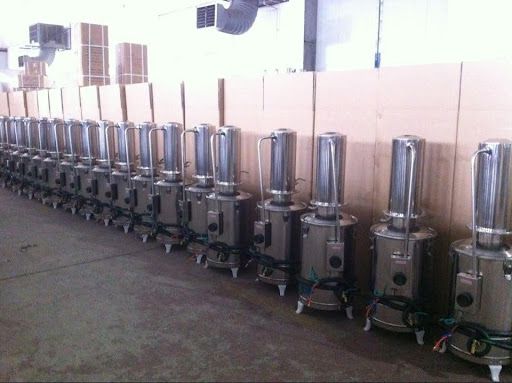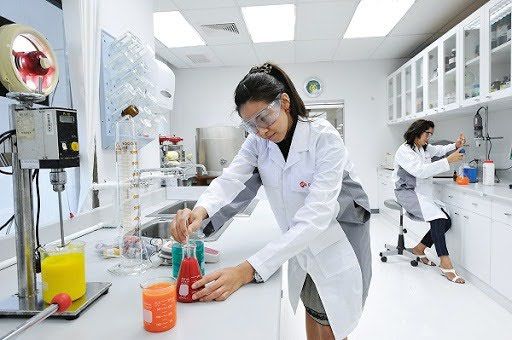Water Distiller
Detailed Guide to Using a Water Distiller for Beginners
Are you looking to learn about water distillers for laboratory or home use? This article provides a detailed guide on how to use a water distiller, covering safety precautions, operation procedures, and international standard maintenance. Practical examples of water distiller models available at EMIN will help you choose the most suitable one. Comparisons between different product lines, tips for safe usage, and long-term cleaning advice are also clearly analyzed.
I. What is a Water Distiller? Operating Principles and Benefits
Definition of a Water Distiller
A water distiller is a device used to remove impurities, minerals, bacteria, and heavy metals from water through the evaporation-condensation process. It works similarly to natural evaporation: water is boiled, converted to steam, and then condensed back into pure water, effectively eliminating almost all contaminants.
Benefits of Using a Water Distiller

Removes bacteria, viruses, chlorine, lead, mercury, and most heavy metals.
Provides pure water that protects laboratory equipment, medical devices, and consumer health.
Saves costs in the long run by reducing dependence on bottled water or expensive filtration systems.
Simple and convenient to use, suitable for various needs including daily living, laboratory experiments, medical use, or industrial production. The YAZD Model water distiller at EMIN supplies pure water for food testing laboratories or hospitals, ensuring uncontaminated test results.
II. Common Types of Water Distillers

1. Manual Water Distiller Systems
Typically sized 1–5 liters, these units operate in batches, suitable for personal use or small-scale applications. Users manually fill water and collect distilled water after each cycle.
Example: The 4 liters/hour Daihan water distillers are ideal for classrooms or small laboratories.
2. Automatic Water Distiller Systems
These distillers connect directly to the water supply and operate continuously, automatically shutting off when the collection tank is full. They’re very convenient for laboratories or factories requiring large quantities of purified water.
Example: HANNA HI2002A water distiller at EMIN has a 20-liter capacity, automatic water level control, and auto shut-off feature.
3. Countertop Water Distillers
Compact and portable, these distillers suit offices, households, or individual use. They are simple to operate—just add water and plug in.
Example: The mini WATA water distiller is used for small research and daily drinking water purification.
4. Industrial / Laboratory Water Distillers
High capacity (10–50 liters/hour), made from premium stainless steel, equipped with automatic controls, and can be installed directly into facility water systems for factories or hospitals.
III. Step-by-Step Instructions on Using a Water Distiller
1. Inspect the Equipment Before Operation
Ensure the water distiller is clean with no electrical or water leaks.
Check power cords, valves, distilled water collection tank, and waste water tank.
Place the unit securely in a dry, ventilated area, out of children’s reach.
2. Fill Water and Assemble the Distiller
Pour water up to the maximum fill line (do not overfill).
Install or check activated carbon filters (if any), secure the lid, and ensure the condensation drain pipe is safely connected.
Make sure all joints are firmly connected before turning on the power.
Practical tip: Some GFL models at EMIN feature a water level inspection window, making it easier to avoid overfilling or running dry during operation.
3. Operate the Distillation Cycle
Plug in the power and press the start button.
The system heats the water to boiling and distills it. After about 30 minutes, distilled water begins to drip into the collection tank; a full cycle usually takes 3–4 hours for 4–5 liters capacity distillers.
When the distiller signals completion (or auto shuts off), wait 10–15 minutes for it to cool before opening the lid to avoid steam burns.
Note: Do not open the lid while the distiller is still hot to prevent burns, and avoid pouring cold water into the hot collecting tank to prevent cracking.
4. Cleaning and Maintenance of the Water Distiller
After each day’s use, clean the condenser and dry the boiling chamber with a soft cloth.
Monthly, use specialized cleaning solutions (e.g., citric acid or machine-supplied cleaning powder) to remove mineral deposits, preserving water quality and extending machine life.
Always disconnect power and allow the machine to cool completely before cleaning.
Practical example: HANNA or Daihan distillers at EMIN are designed for easy disassembly, facilitating chamber and condenser cleaning to maximize durability.
IV. Frequently Asked Questions about Water Distillers
Can water distillers completely eliminate bacteria?
Yes. The evaporation-condensation process in water distillers removes up to 99.99% of bacteria, viruses, and heavy metals, offering higher purity than many other water filtration methods.
Which type of water distiller is recommended for laboratories?
Select water distillers with capacities from 4 to 20 liters/hour, stainless steel construction, automatic controls, and overheating protection for long-term safety.
What is the lifespan of a water distiller?
With proper usage and maintenance, a water distiller typically lasts 7–10 years or more, depending on product quality and care.
V. Featured Water Distiller Models at EMIN
EMIN is an official distributor of water distillers from leading brands such as Daihan, Cole Parmer offering a wide range of capacities and optimized designs for various applications.
Customers can choose mini, countertop, or two-stage water distillers suitable for laboratories, hospitals, or pharmaceutical production.
-
-
-
-
-
-
-
-
-
-
-
-
-
-
-
-
-
-
-
-
-
-
-
-
